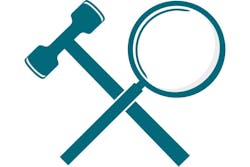The reality is (in the implementations I have been part of), that if you actually give the technicians the correct parts, clear instructions about exactly what needs to be done, a well-equipped workspace in which to do the phase of repair required and pay them the same or better than when they had to fix the car and manage all of the problems (supplements, paint queues, equipment sharing, etc.), there is very little, if any, resistance. Their work theoretically becomes easier. It’s easier to produce a higher quality in less time because much less of their day is spent untangling problems, starting and stopping, and continuously reorganizing their work around the many variables continuously being discovered. This is especially true with larger jobs involving structural repair work and higher parts counts.
So how does the technician miraculously get perfect work order instructions (such that if it says “repair panel,” it’s positively repairable, and the hours estimated to do so are correct)? How does production suddenly get every single part needed, down to the fasteners—the stuff that up until now you could not know you needed until you actually got into the repair, or were putting it back together?
The answer is engineering. No complex, high-quality project relies on someone to keep running out to pick up materials as the project is underway. They begin with thoughtful design, materials procurement, a process of methodical steps, a “standard” (a specific way of doing each operation based upon the engineered specification), and then they actually begin to make or build
whatever it is.
This work, of figuring out what is needed up front, shifts from the tech, who was traditionally relied upon by the estimator (admin) to tell him/her what was needed, to the estimator, to now tell the tech what is going to be needed. It’s a change to a proactive vs. reactive role for the
estimator (repair engineer). Technicians, even with their vast experience and knowledge, are not able to reliably predict everything the car needs at the abbreviated “teardown” on complex repairs, so how could an estimator, especially one with limited repair experience, hope to be better?
As discussed in my previous articles, the answer is to build a damage analysis step where all dismantling is done up front, none is left for later, regardless of whether it disables the car, or creates a challenge for reassembly, or anything else. If anything is left to take apart later, there is great risk that something will happen (broken part), or be discovered later (broken part) that will stop the work.
While this much more thorough dismantling makes it easier for the estimator to see vs. predict what needs to be repaired and replaced, the onus of responsibility still falls to the estimator to get the analysis and resulting work order correct. A good estimator in the conventional model was one who was a good expeditor, good at getting techs what they needed as fast as possible, as they discovered as they went. In the new model, a good estimator is one who gets the techs what they will need, so the additional orders don’t even occur.
This shift in admin work (damage analysis and the associated procurement activity) off of the technician, and back onto admin employees is often overlooked until it actually happens once a transition to blueprinting is underway. Weakness in estimating is exposed, as well as the weakness of the estimating systems; weakness in access to OEM data; weakness in equipment, parts care and storage; and countless other problems that arise when we try to adopt the new work methods.
The good news is, that unless something you want to do violates the laws of physics, it can be done; it’s just a matter of doing it (that is what the boss is for—designing better work methods, training, procuring better equipment to make doing better work easier).
As accountability for correct parts, correct repair vs. replace decisions, and correct blending instructions shifts from the techs who are busy doing the work, back to admin, who exist to support production in the first place, there needs to be a great deal of support from leadership to help admin get up to speed. This can create undue stress on admin staff, as the deficiencies
are magnified by a more visually transparent, connected work process. But planning for the massive shift in accountability from tech to estimator, for correct damage analysis, is easily handled if planned for.
Aaron Marshall manages Marshall Auto Body in Waukesha, Wis. He can be reached at [email protected].
